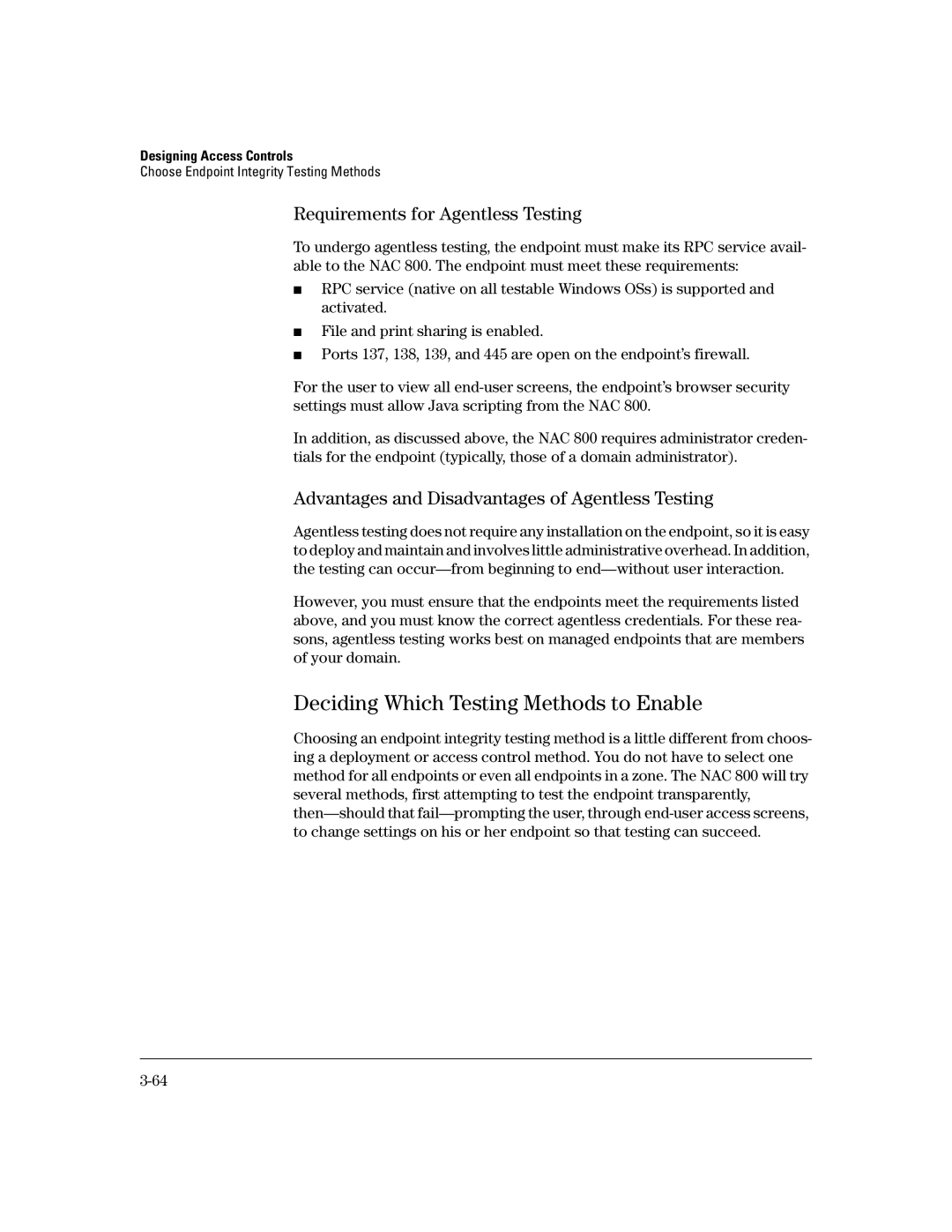Designing Access Controls
Choose Endpoint Integrity Testing Methods
Requirements for Agentless Testing
To undergo agentless testing, the endpoint must make its RPC service avail- able to the NAC 800. The endpoint must meet these requirements:
■RPC service (native on all testable Windows OSs) is supported and activated.
■File and print sharing is enabled.
■Ports 137, 138, 139, and 445 are open on the endpoint’s firewall.
For the user to view all
In addition, as discussed above, the NAC 800 requires administrator creden- tials for the endpoint (typically, those of a domain administrator).
Advantages and Disadvantages of Agentless Testing
Agentless testing does not require any installation on the endpoint, so it is easy to deploy and maintain and involves little administrative overhead. In addition, the testing can
However, you must ensure that the endpoints meet the requirements listed above, and you must know the correct agentless credentials. For these rea- sons, agentless testing works best on managed endpoints that are members of your domain.
Deciding Which Testing Methods to Enable
Choosing an endpoint integrity testing method is a little different from choos- ing a deployment or access control method. You do not have to select one method for all endpoints or even all endpoints in a zone. The NAC 800 will try several methods, first attempting to test the endpoint transparently,
